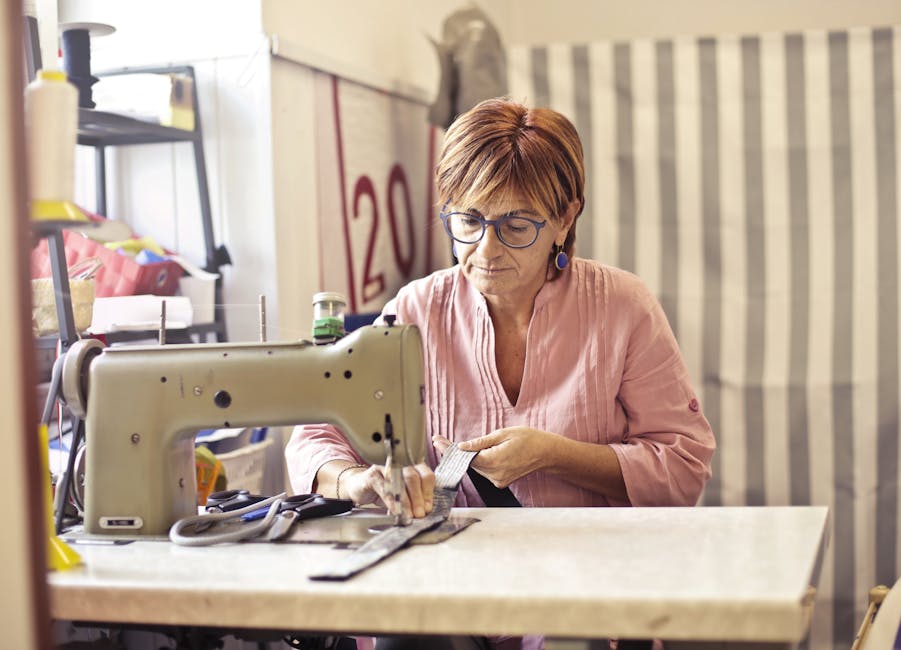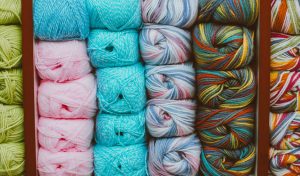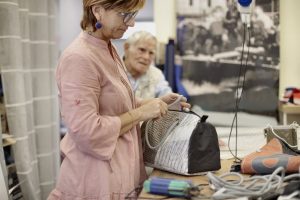Unlock Your Creativity: A Beginner’s Guide to DIY Clothing
In a world saturated with fast fashion, where trends change faster than the seasons, there’s a growing movement towards personalized style and conscious consumption. DIY clothing, or making your own clothes, is gaining momentum as a way to express individuality, embrace sustainability, and unleash your inner creative spirit.
The allure of DIY clothing lies in its ability to transform ordinary fabric into extraordinary pieces that perfectly reflect your taste and personality. From simple alterations to fully custom designs, the possibilities are endless. Whether you’re a seasoned sewer or a complete novice, the world of DIY clothing welcomes everyone with open arms, encouraging you to experiment, learn, and create something uniquely yours.
This comprehensive guide will walk you through the essential steps to embark on your DIY clothing journey. We’ll cover the basics of sewing, pattern selection, fabric choices, and design techniques, equipping you with the knowledge and confidence to turn your fabric dreams into wearable realities. So, gather your sewing tools, unleash your creativity, and dive into the exciting world of DIY clothing!
Getting Started: The Essential Tools
Before you embark on your first DIY clothing project, gathering the essential tools is crucial. A good sewing machine is your primary weapon, and various models are available, from basic machines for beginners to advanced models for experienced sewers. Investing in a high-quality machine will ensure smooth stitching and long-lasting performance. Consider features like automatic needle threading, adjustable stitch length and width, and various built-in stitches when choosing a sewing machine. A sturdy machine with a good warranty is a worthwhile investment that will serve you well for years.
Other essential tools include a pair of sharp scissors, measuring tape, pins, needles, thread, and a seam ripper for those inevitable mistakes. Sharp scissors are essential for precise cuts, while a measuring tape ensures accurate measurements for a perfect fit. Pins hold fabric pieces together before sewing, and needles come in various sizes depending on the fabric weight and stitch type. The thread should be chosen to match the fabric color and weight, and a seam ripper is a lifesaver for removing stitches when mistakes happen. You can find these items at local craft stores or online retailers. Remember, the quality of your tools will directly impact the outcome of your sewing projects, so don’t skimp on essential items like scissors and needles.
Choosing the Right Pattern
Patterns are the blueprints for your clothing creations. They provide detailed instructions and diagrams that guide you through each step of the sewing process. Countless pattern options are available, from simple t-shirts and dresses to intricate blouses and coats. Patterns are typically available in various sizes and are often categorized by skill level, making finding the correct pattern for your project easier. When selecting a pattern, consider your skill level and the complexity of the design. Beginners are encouraged to start with simpler patterns and gradually work up to more challenging designs. Online pattern companies, such as Simplicity, McCall’s, and BurdaStyle, offer various patterns for all skill levels and interests.
Fabric Selection: The Heart of Your Creation
Fabric is the lifeblood of your DIY clothing projects, influencing your creations’ style and overall feel. The fabric choice depends on the type of garment you’re making, the occasion it’s intended for, and your personal preferences. Consider the weight, drape, and texture of the fabric. Cotton is a versatile and comfortable choice for everyday wear, while silk and linen offer a luxurious touch for special occasions. Synthetic fabrics like polyester and nylon are durable and wrinkle-resistant, making them suitable for activewear and travel. When choosing fabric, it’s essential to consider its properties, such as its breathability, drape, and durability. For example, a light and airy fabric like cotton voile is ideal for summer dresses, while a heavier fabric like denim is better suited for jeans or jackets. Always check the fabric’s care instructions before purchasing to ensure it’s washable and fits your lifestyle. Remember, the fabric you choose plays a crucial role in your DIY creations’ final look and feel, so take your time to find the perfect match for your project.
Designing Your Clothes
Designing your clothes is an exhilarating journey for those who crave absolute creative freedom. You can unleash your imagination and create garments that perfectly capture your unique style and personality. Start by sketching your design ideas. Explore different silhouettes, sleeve lengths, neckline styles, and embellishments. Experiment with other fabrics and textures to find combinations that inspire you. Remember, there are no rules in fashion design. Let your creativity flow and embrace the freedom of self-expression. Once you have a design, you can create a pattern using drafting tools or software. Numerous online resources and tutorials can guide you through the pattern-making process. Remember to take accurate measurements and ensure the pattern fits your body shape and size. You can also use existing patterns as a starting point and modify them to create a custom design.
Tips for Sewing Success
Sewing can be a rewarding experience, but it’s also essential to practice patience and embrace the learning curve. Here are some helpful tips to make your sewing journey more enjoyable and successful. Begin with simple projects and gradually move towards more complex designs. Start with basic stitches like straight stitch and zigzag stitch, and master those before moving on to more intricate techniques. Don’t be afraid to make mistakes. Everyone makes mistakes while sewing, and it’s part of the learning process. Use a seam ripper to correct errors and continue learning from your experiences. Practice regularly. The more you sew, the more confident you will become. Start sewing simple projects like pillowcases or tote bags to build your skills and confidence.
Beyond the Basics: Upcycling and Sustainable Fashion
Upcycling, the art of transforming old clothes or materials into new, fashionable items, is a sustainable and creative way to reduce waste and give pre-loved garments a new lease on life. You can create unique pieces by repurposing old t-shirts, jeans, or vintage fabrics. Get creative with alterations, embroidery, and embellishments to breathe new life into existing garments. Upcycling reduces waste and encourages you to think outside the box and experiment with different fabrics and design techniques. It’s a rewarding way to express individuality and contribute to a more sustainable fashion industry. According to a study by the Ellen MacArthur Foundation, the fashion industry is responsible for 10% of global carbon emissions and consumes vast resources. Upcycling is a powerful tool for reducing our environmental impact and promoting a more circular economy in fashion.
DIY clothing offers a gateway to self-expression, sustainability, and creative fulfillment. By mastering the basics of sewing, pattern selection, and fabric choices, you can embark on a personal style and design journey. This journey goes beyond simply creating garments; it’s about understanding the process, appreciating the craftsmanship, and finding joy in transforming raw materials into wearable art.
The beauty of DIY clothing lies in the freedom to create pieces that reflect your unique personality. The limitations of mass-produced fashion do not bind you. You can experiment with different styles, colors, and textures, pushing the boundaries of your creativity and crafting garments that genuinely resonate with your aesthetic. Remember, there are no rules in a DIY fashion. Embrace your mistakes as learning opportunities and celebrate the individuality that shines through your creations.
For instance, imagine a young artist who wants to express their love for vintage aesthetics. They can source old fabrics from thrift stores, repurpose old clothing, and create unique pieces that reflect their artistic sensibility. Or, consider a fashion enthusiast who wants to make a sustainable wardrobe. Using natural fabrics like cotton and linen, upcycling old clothes, and minimizing waste can contribute to a more environmentally conscious fashion industry.
As you delve deeper into DIY clothing, consider joining online sewing communities and workshops to connect with other enthusiasts, share your creations, and learn from experienced sewers. These communities offer a wealth of knowledge, support, and inspiration. You can find tutorials, pattern recommendations, and advice on everything from basic sewing techniques to advanced tailoring. Sharing your projects and receiving feedback from others can help you grow as a DIY designer and discover new possibilities.
The benefits of DIY clothing extend beyond personal satisfaction. By creating your garments, you can reduce your reliance on fast fashion, which is known for its environmental and ethical issues. You can choose sustainable fabrics, minimize waste, and create more extended pieces, contributing to a more responsible and conscious approach to fashion. Moreover, creating something with your hands fosters a sense of self-sufficiency and empowers you to take control of your wardrobe and express your unique style.
Ultimately, DIY clothing is about embracing the creative process and celebrating the joy of self-expression. It’s about learning new skills, experimenting with different materials, and creating pieces that reflect individuality. So, don’t be afraid to step outside your comfort zone, embrace the learning journey, and let your creative spirit shine through your unique designs.

Photo by Andrea Piacquadio on Pexels








Very Nice article.
Your point of view caught my eye and was very interesting. Thanks. I have a question for you.